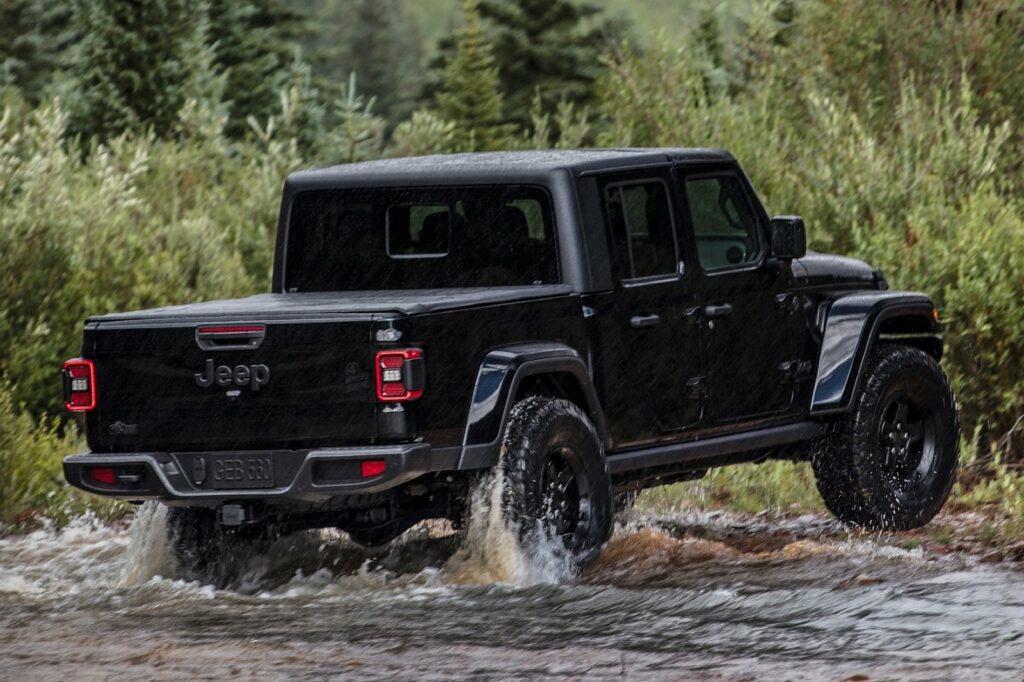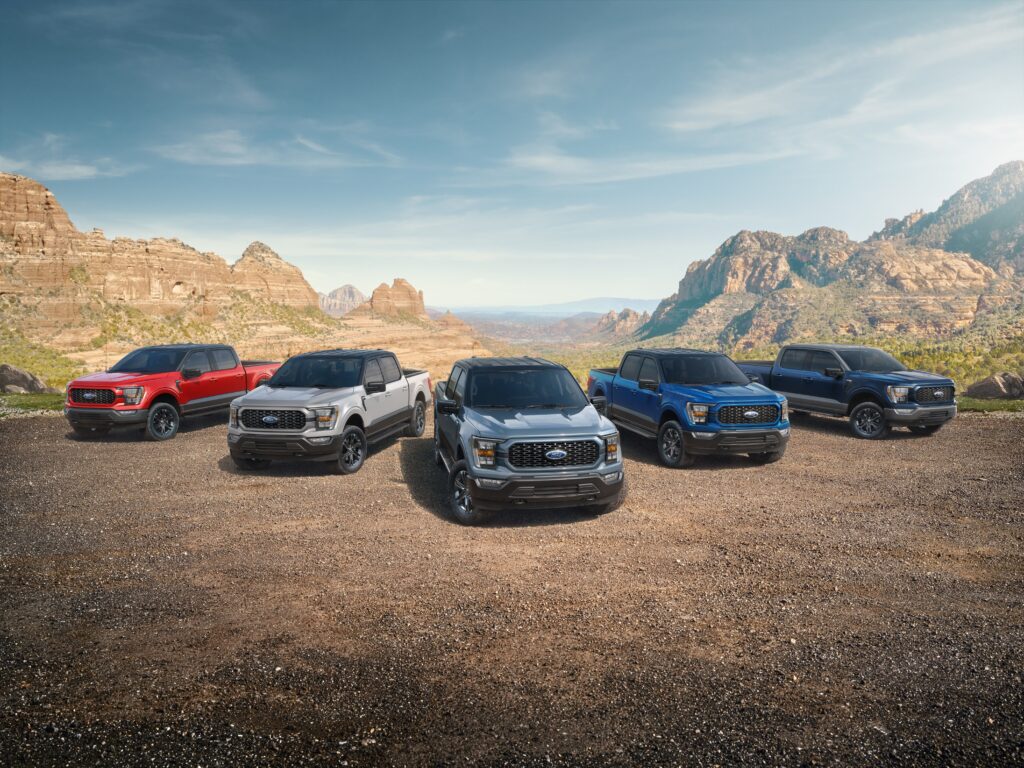Best Truck Brands: Who Makes The Best Pickup Truck?

Best Truck Brands: Who Makes The Best Pickup Truck?
From towing capacity to luxury features, we look at everything that matters.
What is the best truck brand? By simply asking that question, we’re bound to get several scathing comments below as fans defend the pickup truck brands they’ve decided to buy. Nobody buys a truck because they think it’s the second best. The owner of a Chevrolet Colorado will know the merits of his truck by heart if only to explain to a Toyota Tacoma owner why it’s better. The owner of said Tacomo will hit back with sales figures, at which point a Ford Ranger loyalist will point to the new Raptorized midsize truck stating that it can jump higher than any other truck, apart from its bigger brother.
The truth is, every truck in existence can make a case for itself. The Nissan Titan is an average truck, but it comes standard with a 400-horsepower V8 and loads of standard features. People may have laughed at the Ford Maverick when it was unveiled, but it turns out many people wanted a unibody compact truck with a hybrid engine. Even the Honda Ridgeline has something going for it. Thanks to its unibody construction, it has a smooth ride, better than any other truck out there. That matters if you want the practicality that comes with a truck bed but not the downsides of a ladder-frame chassis.
The easiest way to answer this question is to look at the most popular vehicles. Top-selling trucks are chosen by the most democratic process there is; therefore, they must be the best truck brands. In that case, the Ford F-150 is the best full-size pickup truck, while the Toyota Tacoma is the best in the midsize segment. Ford trucks also take the win in the small pickup truck segment. It also sells the most electric trucks, making it the most successful of the electric truck brands. That makes Ford the best of the truck makers, and that’s the end of it.
But already, I know this will spark fury down below. Just because a car sells the most doesn’t mean it’s the best. The Ford Bronco is better than the Jeep Wrangler (it just is), and the Kia EV6 is way better than the Tesla Model Y.
So, we have to take a more numerical approach to deciding which pickup trucks are the best in their particular segment. That’s why we decided on five overall segments and compared all the various attributes people look for within these specific arenas.
Ford breathed new life into this segment when it launched the Maverick. There is some overlap with the midsize truck segment if you opt for the top Lariat trim, which retails for roughly $35,000. That overlaps with the Ford Ranger, Nissan Frontier, and Toyota Tacoma work trucks. But there are only a handful of direct rivals. Actually, it’s less than five because the only direct competitors include the Hyundai Santa Cruz and possibly the Honda Ridgeline because it’s also a unibody design.
In this segment, performance capabilities like towing capacity, four-wheel-drive, and powerful engines don’t matter as much. However, you can add certain packages to increase these trucks’ off-road prowess.
What matters here is acceptable fuel economy (ruling out the Honda Ridgeline), a semi-spacious cabin, and a properly equipped interior across all trim levels. Towing and hauling were never going to be top of the list because of how these trucks are constructed.
But, in case you were wondering, the Maverick can haul 1,500 pounds, while the Santa Cruz can only manage 1,411 lbs. Both cars hit their maximum towing capacity when equipped with turbocharged engine options. The Maverick can only tow, 4,000 lbs, while the Santa Cruz can pull an additional 1,000 lbs.
The Ford Maverick gives the Santa Cruz a sucker punch in the fuel economy department. No hybrid Hyundai is available, so the best it can do is 23 mpg combined. The Maverick, equipped with a hybrid powertrain, can easily achieve 37 mpg.
Both tiny trucks also live up to the comfortable cabin standard. From the base trim, both the Maverick and Santa Cruz have air-conditioning, a touchscreen interface with Apple CarPlay and Android Auto, and decent sound systems.
In this case, the people have spoken, and the Maverick is the winner. It’s roughly $3,000 cheaper than the Santa Cruz, and the public loves that hybrid powertrain option.
Chalk one up for the American brands.
This is a tough one to call because there are so many new trucks to choose from. We can safely rule out the Nissan Frontier because it’s too old and offers nothing above the ordinary. However, that still leaves us with the new Ford Ranger, Chevrolet Colorado, GMC Canyon, and Jeep Gladiator. There are no Ram trucks in this segment yet, but we know that one is in development.
We’ll rule out the Jeep Gladiator due to its singular focus: to be the best at off-roading. The elements people are looking for in a truck brand in this segment are a mix of the compact and full-size truck segments. They want acceptable fuel economy and comfort but with the additional practicality afforded by a ladder-frame chassis. You’re not going to get the same towing and hauling figures as full-size trucks, but it should at least be enough to tow a decent-sized trailer or a race car.
The best truck brands in this segment are also expected to offer at least one model with proper off-road ability. It’s not an absolute necessity, but it will help to get the vote as the best pickup in this segment.
Most of the trucks sold in this segment are crew cab models. They’re essentially three trucks in one package. You can take the kids to school, load a sheep or two in the back, and take it to a fancy restaurant if you opt for a higher-trim model.
All of the latest models offer sublime comfort on the inside as they’re all equipped with the latest gadgets and safety features. The Taco and Chevrolet Colorado recently underwent a complete redesign, while the Ranger still soldiers on with the T6 platform introduced in 2011.
Since all of them are powered by turbocharged four-pot engines, let’s see how they stack up.
The standard non-Raptor Ranger is equipped with a 2.3-liter EcoBoost four-cylinder, producing 270 horsepower and 310 lb-ft of torque. Ford also has a unique selling point: a more powerful 2.7-liter twin-turbo V6 with 315 hp and 400 lb-ft on tap. In the most capable configuration, it can tow 7,500 lbs.
The Toyota Tacoma’s tow rating is 1,000 lbs down on the Ford, and you can only put 1,710 lbs in the bed. The top-spec i-Force Max hybrid powertrain is more powerful than Ford’s twin-turbo V6, however. The 326 hp and 465 lb-ft easily trumps the Ford.
The Chevy Colorado is powered by a turbocharged 2.7-liter four-cylinder engine with either 237 horsepower in the base trims or 310 hp and a huge 430 lb-ft in the rest. The maximum payload for the Colorado (and its GMC cousin) is 1,480 lbs, but it can tow up to 7,700 lbs.
The leading contenders in this segment are the Ford F-150, GMC Sierra, Chevrolet Silverado, Ram 1500, and the Toyota Tundra. The Nissan Titan also slots in here, but it will soon be a thing of the past.
To make things easier, we’ll split this category into two. A sizeable portion of these truck models are used for work, but a large chunk of properly equipped trucks carry the family around during the week and tow thousands of pounds of hobby equipment over the weekend. We’ll also include the best full-size pickup truck for off-roading.
A decent truck for work application needs the best towing capacity, loading capacity, and a few creature comforts to make the working day easier on the body. We recommend reading our complete guide on vehicle weight to better understand what you can and cannot do with these trucks.
The good news is that every full-size truck mentioned above is equipped with at least a decent radio and a basic air-conditioning system, so that’s comfort sorted. The bad news is that you can expect poor fuel economy across the board. That’s just the way things are. If you want a frugal truck, we suggest you look at the compact truck segment.
The recently facelifted Ford F-150 is available with multiple engine options, including a turbocharged diesel engine. But the well-known 3.5-liter EcoBoost V6 provides the Ford truck with its best towing capacity of 14,000 pounds. The 3.5 EcoBoost also has the highest payload capacity at 3,235 pounds.
It’s worth remembering that you must opt for certain body styles and optional equipment to unlock the best Ford offers. In the case of the F-150, you have to order a base XL with a SuperCab body and an eight-foot bed to access the 3.5 EcoBoost engine. You must then add the Max Trailer Tow Package and the Heavy Duty Payload Package. Only then do you end up with one of the best trucks for towing and hauling.
Please note that we’re not having a go at the Ford F-150 specifically. The same is true for the other trucks on this list. All the best brands are guilty of this.
The Chevrolet Silverado and GMC Sierra are the same car. The GMC truck simply offers a more upmarket name and a better interior with more features. To access the maximum towing capacity for these two trucks, you can go one of two routes. You can either opt for a Double Cab equipped with 4WD and the optional 6.2-liter V8 or a RWD Double cab equipped with the 3.0-liter six-cylinder turbodiesel. The V8 boasts 420 hp and 460 lb-ft of torque, while the diesel has 305 hp and 495 lb-ft. Both are mated to a 10-speed automatic transmission. These two pickups can tow 13,300 lbs and haul 2,280 lbs in these configurations.
The Ram 1500 is more of a lifestyle truck, and all the updates announced for the 2025 model year affirmed this. If you want a Ram working truck, you have to go for the 1500 Classic, which may be living on borrowed time. Still, a properly equipped Ram 1500 can tow 12,750 lbs, while the Ram Classic can only manage 10,620 lbs when equipped with RWD and the 5.7-liter V8. Interestingly, once the 1500 ditches the V8 in favor of the new Hurricane inline-six, it will only be capable of towing 11,580 lbs and carrying 2,300 lbs in its bed.
The Toyota Tundra is also more on the lifestyle side. When equipped with the non-hybrid 3.4-liter twin-turbocharged V6, it can tow up to 12,000 lbs and carry 2,900 lbs on its back.
Looking at these figures, the Ford F-150 is the apparent winner in the work truck category.
We know that all of these trucks at least have enough grunt to tow a few cows, but once you breach the higher trim levels, it’s just as much about comfort and technology. All of these truck manufacturers bring the latest technology to the table, but the Ram 1500 has always been a cut above the rest, followed by the F-150 and the GMC Sierra 1500.
While the tow and haul figures may be on the low side, it’s a worthy payoff for the upmarket interior and ride quality.
The secret ingredient is Ram’s rear coil spring suspension, which is miles ahead of the traditional leaf-spring suspension used by most truck brands. You can even take it a step further by adding the optional air suspension. This truck rides and handles better than something this size is supposed to. We’re not saying it’s the best truck overall, but if comfort is higher on your shopping list than everything else, this is the truck for you.
We would wait until the 2025 model arrives. Ram is making significant changes and is adding impressive models like the Tungsten and RamCharger. The latter is incredibly impressive and a new take on electric cars. Ram trucks knocked it out of the park, and we reckon it’s worth the wait.
There is only one correct answer. The Ford F-150 Raptor is an institution, and it has no rival right now. The Ram 1500 TRX is dead, and while Dodge plans on bringing it back at some point, we have no idea when.
Some may argue that the Raptor is only for jumping over dunes, but it’s also epic over the slow technical stuff.
The Raptor R has 13.1 inches of ground clearance and approach, breakover, and departure angles of 33.1/24.4/24.9 degrees, respectively, when you opt for the optional 37-inch wheels. Now that the TRX is dead, the 700-hp Raptor R reigns supreme.
The good news is that there are cheaper options available. The 2024 Chevrolet Colorado ZR2 Bison won our CarBuzz off-road warrior award, and it’s significantly more affordable than a new Raptor.
If you’re shopping for a heavy-duty truck, you obviously need to tow something big. These truck models are also available with a dual-rear-wheel setup, further enhancing the towing capabilities.
Almost all truck brands compete in this segment, but the big sellers are the Ford Super Duty, Chevy’s Silverado HD range (and the Sierra HD models by association), and the Ram 2500 and 3500.
The undisputed winner in this class is the Ford F-350 Super Duty, which can tow 40,000 lbs with a gooseneck hitch. An F-250 with a conventional setup can tow 22,000 lbs.
The Ram 2500 is second, with a gooseneck tow rating of 37,090 lbs. In third place, we have the Silverado HD and Sierra HD duo, which can manage 36,000 lbs.
It’s interesting to note that all the best truck brands in this segment are American. Apart from Nissan, the Japanese brands don’t even bother. The Nissan Titan XD, Japan’s attempt at taking on the American heavy-duty pickup trucks, can only tow 11,000 lbs. It’s one of the many reasons why the Titan has been culled, never to be resurrected.
To many, the electric pickup truck doesn’t make sense. As we know, they’re not particularly good at towing. Even the wildly ostentatious and overweight Hummer EV can only tow 7,500 pounds, even though it has 1,000 hp on tap. The main issue is range. All electric vehicles are designed to be as slippery as possible, and as soon as you attach something to the rear, all of those years of studying aerodynamic flow charts go out the window.
So why do these trucks even exist? Well, first, we need to talk about an uncomfortable truth. Research has shown that 75% of truck owners only use their truck to tow something once a year or less. So if you’re out here claiming that you tow something every day, you’re either part of the 25% or full of crap.
Some people like trucks because they’re a status symbol, and there’s nothing wrong with that. That’s why these trucks exist, despite manufacturers marketing things like powering your house. Most truck brands are getting in on the electric game to make money. Whether it’s the Hummer EV, Silverado EV, Rivian R1T, or Ford F-150 Lightning, these trucks are built to shock and awe. That’s why their makers develop cool features like the Rivian theater screen.
The best of the lot appears to be the Tesla Cybertruck. We’ve made fun of this truck for years, but now that it has finally arrived, it has blown everything else away.
There is a proviso, however. Tesla hasn’t ramped up production to full capacity, and it’s far too early to tell whether the Cybertruck will be built to a higher quality than Tesla’s other vehicles.
For now, the best electric truck is the Lightning because it does so many things so well. It is also the best-selling, with Ford selling nearly 4,400 units in November.






Responses